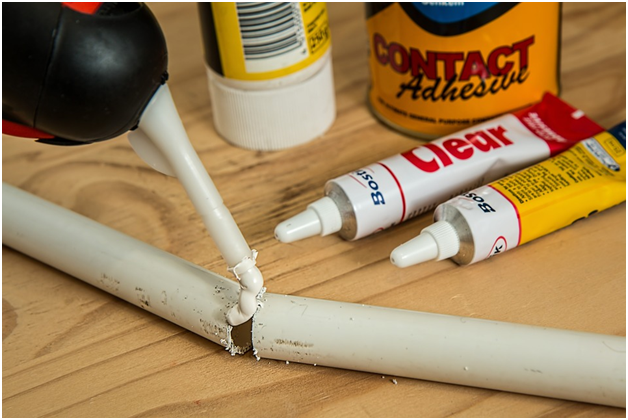Choosing the right adhesive for the job is simple if you know what materials you need to bond together.

You can find out more about the application of different glues here, but first here’s a quick guide to choosing the right glue for woodworking, crafting and more.
PVA
Polyvinyl acetate is probably the most easily available adhesive and is a good general purpose glue for woodworking and crafting. All PVAs are water-based to clean up easily and will form a strong bond, but only when used with porous materials like wood, paper and fabric. Some PVAs are more water-resistant than others.
Synthetic resin
Most commonly used in woodworking, synthetic resin satisfies modern needs for durability and strength. Synthetic resins replaced natural glues after WWII and are by-products of the petrochemical industry. These man-made polymers have a high water resistance, making them ideal for joining wood, though they’re also used for bonding paper with paper.
Epoxy Resin
High performance adhesives for bonding metals and plastics, these consist of an epoxy resin and a hardener mixed immediately before use. These types of glues can be difficult to work with, requiring precise mixing and a long curing time for maximum efficiency. Powerful glues like CT1 metal bonding adhesives are waterproof, solvent free and can do away with the need for drilling and bolting.
Contact adhesive
Contact adhesives come in spray, gel or liquid form and are ideal for developing a strong bond. They’re often used to glue laminate to a worktop or an upper to a shoe sole. Contact adhesive is applied to both materials to be bonded and is then left to cure before the two surfaces are pressed together, often with a clamp. Contact adhesive can also be used with polystyrene and fabrics.
Cyanoacrylate adhesive
Better known as superglue, this can set in seconds and forms an effective, super-strong, clear and waterproof bond. Best used for wood, ceramic, leather and glass, superglues can also be used as metal bonding adhesives.
Acrylic cement
Acrylic cement is used for joining acrylics and some other types of plastic by partially melting the surface and then fusing together. Surfaces to be bonded must be smooth and clean before applying acrylic cement, often with a syringe type applicator, as these adhesives are free flowing and require control for precise application.
